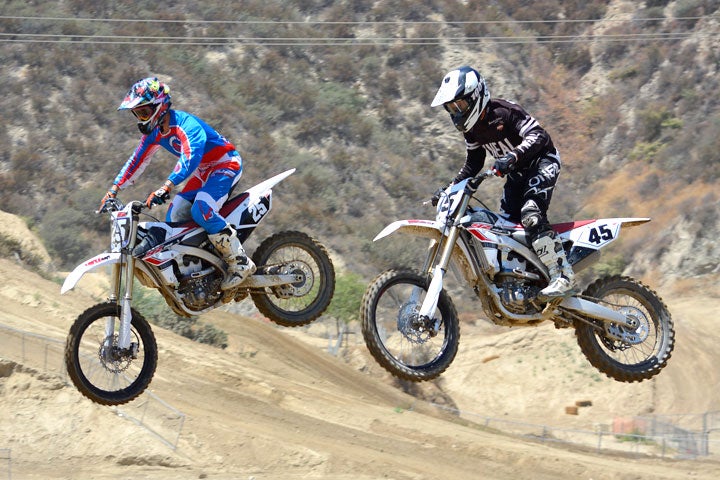
There are a number of excellent motocross machines on the market, but if you’ve been looking for a new ride during the past three years, you really couldn’t go wrong with a Yamaha YZ.
The tuning fork company has been on a relentless development program to successfully turn its 250cc and 450cc four-stroke models into class leaders, and while the pace of that development has slowed for 2017, Yamaha’s latest models, especially the YZ250F, incorporate more changes in an effort to keep them at the head of the pack. Yamaha recently invited us to Southern California’s Glen Helen Raceway to sample the 2017s, and after swinging a leg over both the YZ250F and the YZ450F, we expect them to remain in the hunt for top honors in their respective classes.
Yamaha YZ250F
Despite dominating the class for the past two years, the YZ250F has undergone the proverbial “fine-toothed comb” treatment again, building on the strengths of the fuel-injected, DOHC, reverse incline-headed quarter-liter screamer while shoring up some of its perceived weaknesses. For 2017 Yamaha’s development program goals included increasing engine output from 7000-14,000 rpm to give the engine a longer and stronger pull, while also improving both clutch and shifting performance. Yamaha also looked for ways to improve stability, cornering and rear-wheel traction. Last but not least, the suspension was fine-tuned for better bump absorption. For all these changes, you’ll pay a $109 premium at your Yamaha dealer, as the MSRP of the YZ250F has jumped from $7590 to $7699.
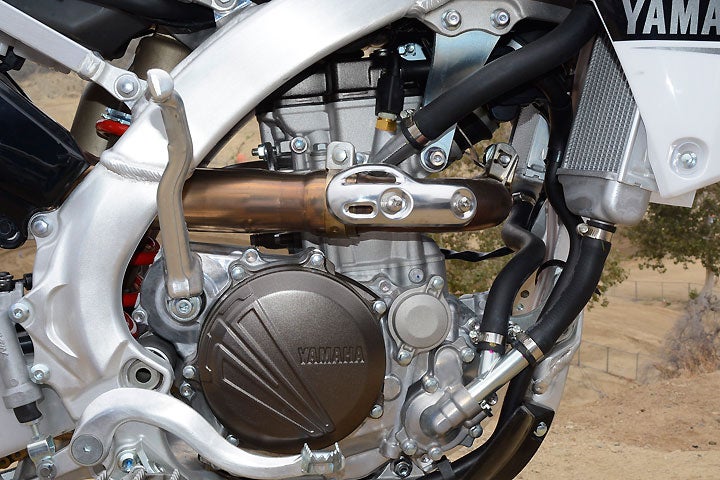
To address the power character, the 2017 YZ250F receives a new cylinder head with .4mm larger diameter valve seats and straighter intake ports achieved by raising the inlet port position 4mm. The inlet ports have also been reshaped, and the exhaust port divider has been eliminated to increase the flow rate through the motor. Other intake tract changes include a 15mm shorter air funnel length and the addition of an aluminum core inside the throttle body joint; the core transfers heat into the intake, which Yamaha says will improve fuel atomization.
To fill the cylinder more efficiently, the YZ250F also gets new camshaft profiles and new valve springs. Intake cam lift has been increased by .1mm and the cam has been retarded by 8 degrees, and exhaust cam lift has been increased by .5mm. External improvements include a change to the diameter of the YZ’s wrap-around mid-pipe, which is 2.8mm larger on the left side and 2.3mm larger on the right side. Yamaha also increased the bend radius of the mid-pipe by 10mm, thus giving the exhaust gases both more room and a straighter curve for better exhaust flow. Of course, the YZ250F’s ECU has also been recalibrated to help maximize the new engine performance specs.
From a durability standpoint, Yamaha also made two noteworthy changes to the 2017 YZ250F engine. The rotating group features a new connecting rod with nickel added to its material mix for better durability. The cross section of the rod has also been increased by 10 percent. The engine cases are also improved via a heat-treating process to make them more rigid.
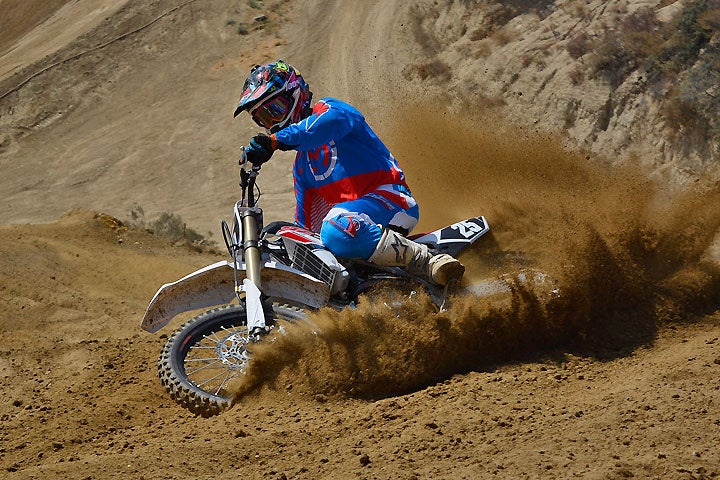
Once on track, DirtBikes.com test pilot Ryan Abbatoye noted that the 2017 YZ250F’s power output was noticeable enough with the stock ECU settings. The engine barks cleanly down low, but the mid-range transition is even stronger than the 2016 models, and the 250F still revs out with authority to its 14,000 rpm sign-off, which has been made a little less abrupt due to a change in the way that the rev limiter intervenes.
However, ECU tuning can bring even more out of the YZ250F, and Yamaha is fortunate to have a solid factory test rider in former AMA National Motocross and Supercross competitor Travis Preston, who clearly takes a personal interest in finding the best calibration settings to maximize the YZ’s potential. Once again, Preston’s settings didn’t disappoint, adding even more snap to the 250F’s mid-range and top-end, a welcome help on a Glen Helen track that was particularly deep during our ride day.
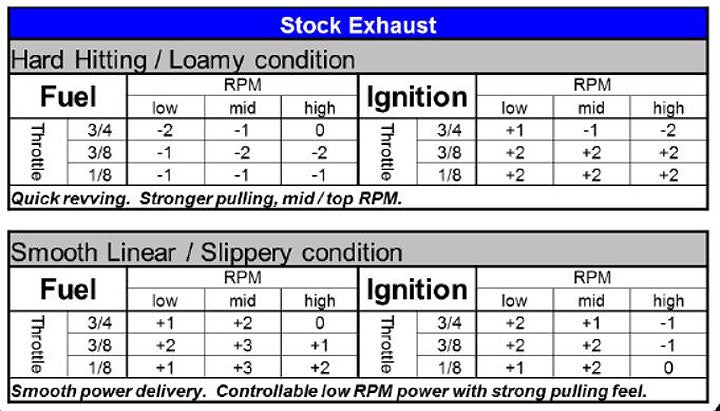
“The difference is pretty dramatic,” Abbatoye said. “With the ECU adjustments, the mid-range is a lot stronger, and you can hold gears a lot longer than with the stock settings. It’s faster and easier to ride all at the same time.”
The power improvement almost—but not quite—makes a couple other key changes to the YZ250F less noticeable, namely its improved clutch and transmission. Yamaha’s goal was to give the clutch a lighter, pull, and to that end the clutch arm assembly has been changed by fitting an arm that is 3mm shorter while the cam offset has been decreased from 4.18mm to 3.98mm and the cable bracket has been relocated to create a more direct pull for the clutch cable. In order to pull crisper shifts out of its six-speed transmission, the 250F’s shift drum features grooves that have been machined with more gradual angles for quicker shift fork movement. Yamaha also found that by switching to a different shift lever material and then heat-treating the lever to increase its yield strength by 76 percent, the YZ feels as if it shifts quicker than ever.
Abbatoye noticed the improvement in the clutch immediately, noting that it was lighter-feeling and much easier to modulate than the 2016’s—and he had good reason to notice since he was nursing a smashed index, courtesy of a construction accident at the old homestead. The transmission improvement is less noticeable primarily because we already liked the YZ250F’s shifting performance over the past two years anyway. If the new bike changes gears better than the previous bike, it’s only marginally better. And it certainly isn’t worse. Hey, they can’t all be zingers.
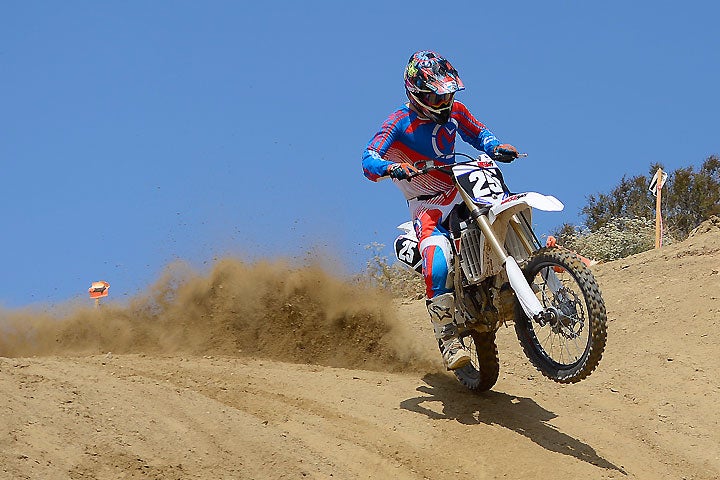
However, we can certainly appreciate Yamaha’s efforts in improving transmission reliability for 2017. It’s obviously stuff you can’t see from the outside, but plenty of work was done to increase the durability of the YZ250F’s transmission, which undoubtedly sees far more gear changes than your average 450. To deal with the power increase of the 250F engine, Yamaha has decreased the transmission output shaft internal diameter by 1.1mm—in other words, it’s thicker now—and added oil supply holes and grooves to the transmission shafts for better lubrication. The width of the YZ’s second and third gears has been increased 1mm and 1.2mm respectively, and the dog radius of first, third and fifth gear has been increased by 1mm.
All the YZ250F’s newfound power would be for naught if it couldn’t be put to the ground effectively, so Yamaha made some significant mods to its bilateral beam aluminum chassis and KYB suspension to maximize hook-up, cornering ability and stability. For starters, the main frame incorporates a different forging at the swingarm pivot—it’s 2mm wider when viewed from the front edge to the back edge. That change also forced a change to the engine mounts, which are reshaped, with the lower mounts also undergoing a material change from aluminum to steel to givethe chassis slightly more flex.
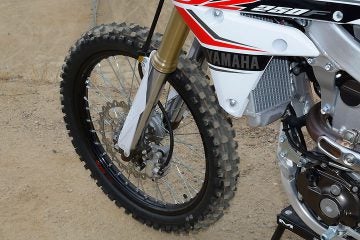 On the suspension front, Yamaha continues to stick with the KYB Speed Sensitive System fork and wear diamonds. The fully adjustable 48mm KYB coil spring fork has been updated for 2017 via thicker tubes at the base of the slider for increased rigidity. Suspension travel is still 12.2 inches. Out back, the YZ’s fully adjustable KYB monoshock gets a spring rate decrease from from 4.7 to 4.6 N/mm. Rear wheel travel remains at 12.4 inches. Both ends also have revised settings to balance the suspension action with the chassis changes.
On the suspension front, Yamaha continues to stick with the KYB Speed Sensitive System fork and wear diamonds. The fully adjustable 48mm KYB coil spring fork has been updated for 2017 via thicker tubes at the base of the slider for increased rigidity. Suspension travel is still 12.2 inches. Out back, the YZ’s fully adjustable KYB monoshock gets a spring rate decrease from from 4.7 to 4.6 N/mm. Rear wheel travel remains at 12.4 inches. Both ends also have revised settings to balance the suspension action with the chassis changes.
Here again, the battle to improve an already excellent chassis is a tough one. Abbatoye noted that the 2017 YZ250F still has all the positive attributes that the 2016 had. It’s as stable as an arrow at high speeds, it turns wherever you point it, and it can rail berms or sweepers with equal authority. Likewise, the suspension action from both ends is enough while offering excellent control through ruts over whoops and when landing from big jumps.
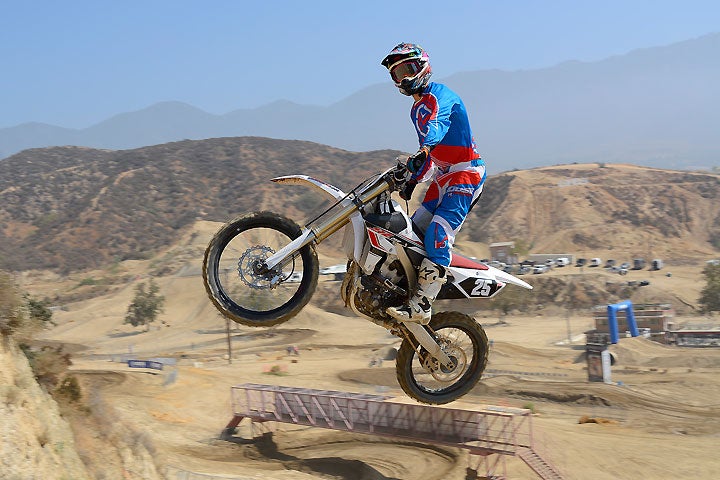
Part of the YZ’s handling capabilities, and part of what we’ve liked about the YZ250F since its last major redesign, is its ergonomic profile, which is flat and narrow, giving the rider plenty of room to maneuver the bike through any corner or fly it over any jump with complete confidence. For 2017, Yamaha has modified the ergos slightly by lowering the footpegs 5mm. This was done primarily to improve the bike’s center of gravity, but we also appreciate the extra legroom it affords.
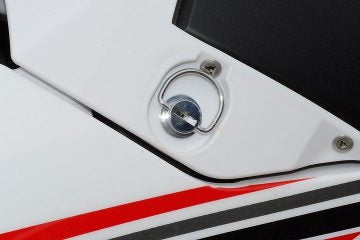 One seemingly insignificant change for 2017 was one we love: the new air cleaner cover with recessed dzus fasteners. During last season, when DBC tester Nic Garvin brought back our YZ250F, sans dzus fasteners, he explained that he had gone through two sets already, and he couldn’t figure out where the hell they were going. We thought he was just a kook who didn’t know how to lock down a dzus fastener, but it turns out that Nic wasn’t the only one having the problem. So, in an attempt to rid the world of orphaned dzus fasteners at motocross tracks around the globe, Yamaha redesigned its air cleaner cover to incorporate recesses in the plastic so that the fasteners are protected from boot edges and knee guards that might otherwise pluck them from their happy nesting spaces. We don’t know about you, but that’s ingenuity in action as far as we’re concerned! Seriously, it’s a change that makes a difference.
One seemingly insignificant change for 2017 was one we love: the new air cleaner cover with recessed dzus fasteners. During last season, when DBC tester Nic Garvin brought back our YZ250F, sans dzus fasteners, he explained that he had gone through two sets already, and he couldn’t figure out where the hell they were going. We thought he was just a kook who didn’t know how to lock down a dzus fastener, but it turns out that Nic wasn’t the only one having the problem. So, in an attempt to rid the world of orphaned dzus fasteners at motocross tracks around the globe, Yamaha redesigned its air cleaner cover to incorporate recesses in the plastic so that the fasteners are protected from boot edges and knee guards that might otherwise pluck them from their happy nesting spaces. We don’t know about you, but that’s ingenuity in action as far as we’re concerned! Seriously, it’s a change that makes a difference.
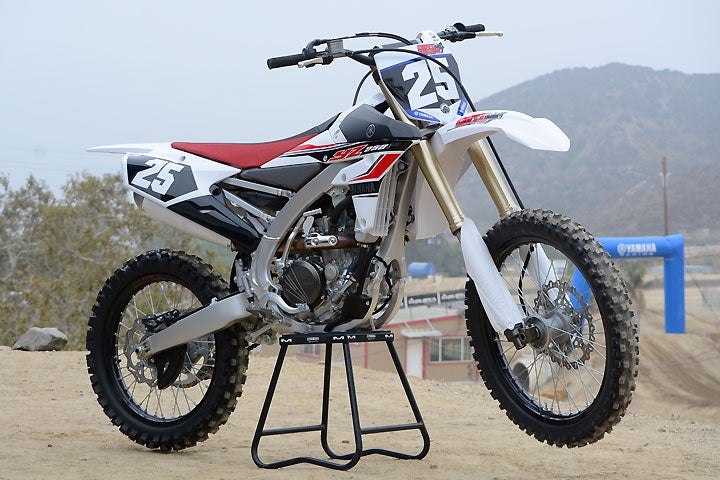
And that about sums up the 2017 Yamaha YZ250F, effective changes that make a difference to the overall package. Some of the changes are more effective than others, and with redesigns coming from Kawasaki and—we think—Honda, the question remains as to whether Yamaha can retain its spot on the 250cc four-stroke motocross throne.
Time will tell, but Yamaha appears to be ready to defend its crown.
2017 Yamaha YZ450F
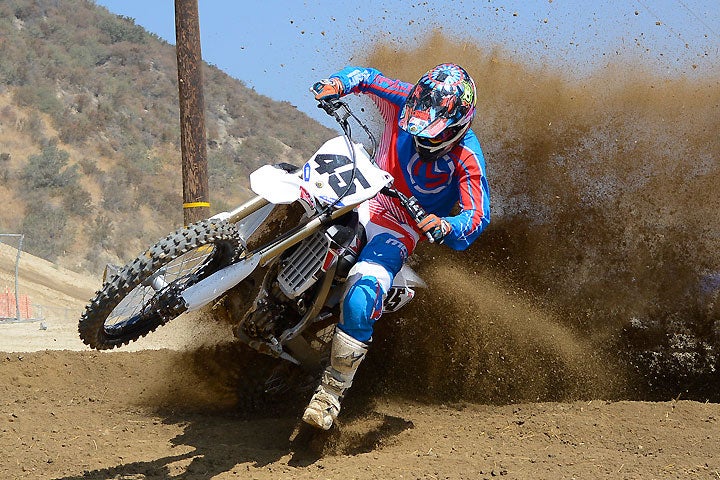
We’ve spent a lot of time aboard the Yamaha YZ450F, and for 2017 Yamaha’s big-bore beast returns with just a few key changes, including the fitment of Dunlop’s new GeomaxMX3S tires, a new countershaft seal, new rear brake disc material that is designed to dissipate heat more efficiently (something also found on the YZ250F), a new countershaft seal, a new oil strainer inside the engine, and the new air cleaner cover with the recesses for the dzus fasteners.
With such a short list of changes, there really isn’t much we can tell you that we didn’t already say in our review of the 2016 Yamaha YZ450F. The YZ450F is still the king of the 450cc class in our book, although it will be interesting to see what rival Honda comes up with for the 2017 season. We can’t wait to get all of the 450s out on the track for a comparison.
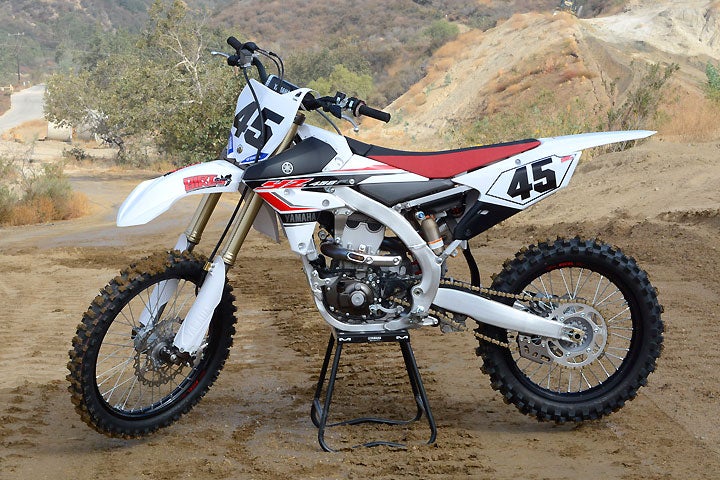
About our only lament is that the beautiful “photo strobe” yellow, black and white graphics are gone, replaced by Yamaha’s alternative white, red and black color option for customers seeking something different than the standard Team Yamaha blue. In either color option, MSRP is $8699.
 Your Privacy Choices
Your Privacy Choices